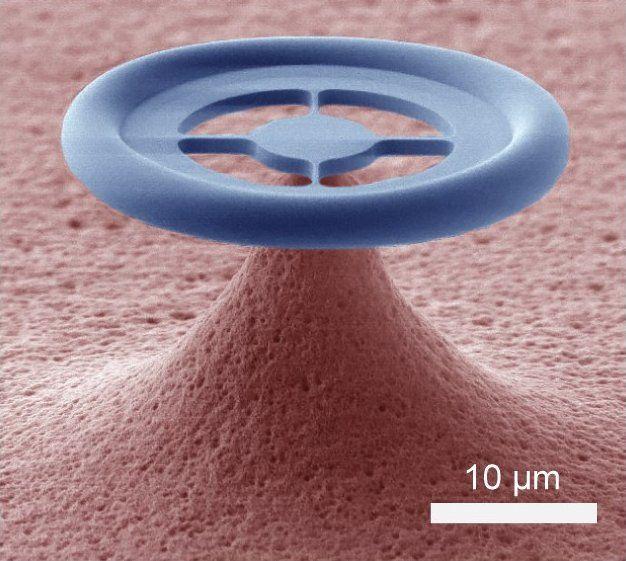
EPFL physicist wins national science award

German physics professor Tobias Kippenberg has won the 2014 Latsis Prize for his research on miniature glass oscillators that store light and vibrations.
Based at the Swiss Federal Institute of Technology in Lausanne (EPFL), Kippenberg studies the laws of quantum physics – which govern tiny structures made up of elementary particles or atoms – at the Laboratory of Photonics and Quantum Measurements K-Lab. The physicist, however, is also looking into practical applications and even the commercialisation of his inventions, the Swiss National Science Foundation said on Tuesday.
Within half a degree of absolute zero (-273.15 °C), the physicists measure and manipulate ring-shaped glass oscillators – smaller than the diameter of a hair – with spokes like bicycle wheels. Light is able to circulate up to a million times around the circumference of the ring as though within the tyre of the wheel, thereby producing a mechanical vibration.

Kippenberg and his colleagues conduct their studies in barely visible mechanical resonators formed from billions of atoms. Such resonators are designed to store photons and phonons – light and vibrations – in a micro cavity for a relatively long period of time, the science foundation said.
In 2012, Kippenberg and his team published an article in the journal Nature, where they showed for the first time that it was possible to inject laser light to reach a so-called quantum state where the light and vibrations of the resonator would be coupled. Up until then, thermal excitation in the oscillator had caused what is called quantum decoherence, where light and vibrations would be separated.
Practical applications
In addition to the basic research, the EPFL researcher is also looking at practical applications. He discovered that if he connects the light of a laser beam to his micro resonator using an optical fibre, it is possible to produce a so-called optical frequency comb, which may be used to improve the precision of instruments such as astronomical spectrometers or atomic clocks.
The problem with existing devices used for calibration is that they are the size of a table, extremely complex and have a very fine tooth spacing. Kippenberg’s devices, however, would be easier to use because they are in miniature format and have large comb tooth spacing.
In 2007 and 2013, Kippenberg filed patents on his devices used for ultra-high precision calibration. He now hopes to start producing and selling his device through a start-up company.
Valued at CHF 100,000 ($103,000), the National Latsis Prize is one of the most important scientific honours in Switzerland. The prize is awarded on behalf of the International Latsis Foundation to researchers up to the age of 40 for exceptional scientific work conducted in Switzerland.

In compliance with the JTI standards
More: SWI swissinfo.ch certified by the Journalism Trust Initiative

















![The four-metre-long painting "Sonntag der Bergbauern" [Sunday of the Mountain Farmers, 1923-24/26] had to be removed by a crane from the German Chancellery in Berlin for the exhibition in Bern.](https://www.swissinfo.ch/content/wp-content/uploads/sites/13/2025/12/01_Pressebild_KirchnerxKirchner.jpg?ver=a45b19f3)











You can find an overview of ongoing debates with our journalists here . Please join us!
If you want to start a conversation about a topic raised in this article or want to report factual errors, email us at english@swissinfo.ch.